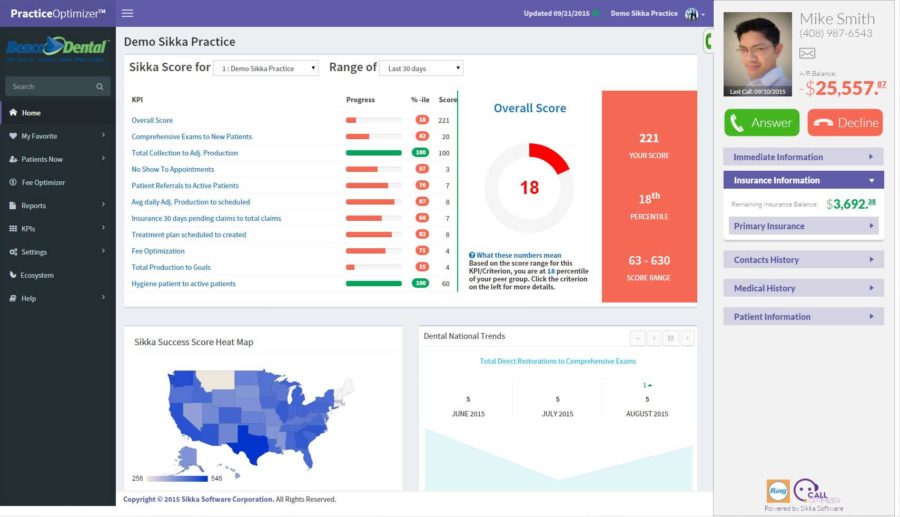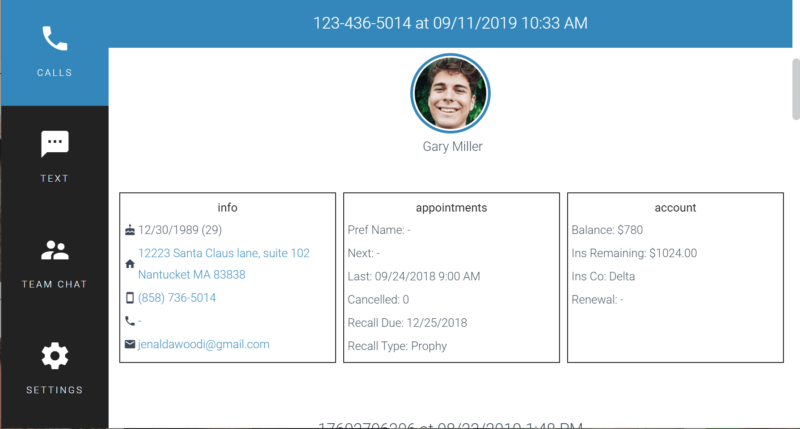Physician practice management (PPM) is now an essential component of any medical practice. Today’s physicians face mammoth workloads. Treating patients and providing primary care alone are huge responsibilities. Adding medical practice management on top of that is detrimental to doctors and patients alike.
The administration that goes on behind the scenes at any medical practice is extensive—from electronic health records to appointment bookings and patient management. As such, medical expertise alone cannot keep practices running smoothly.
Many physicians today work in hospitals or medical practices. There is more need than ever before for streamlined practice management tools. We can’t expect physicians to manage business operations and still treat patients effectively.
It’s in everybody’s best interest to outsource non-medical tasks to practice management companies. This reduces the administrative burden placed on medical practitioners. When workforces function as a team, individual practitioners can continue running at full capacity.
More than ever, telecommunications are informing healthcare. COVID-19 brought remote practices to all industries. The pandemic has heightened the uptake of telehealth services and seen a consolidation of tech across the healthcare niche. Medical practices need to reduce peak-time pressures and provide flexible medical care.
Let’s dive in with everything you need to know about physician practice management:
- What is a physician practice
- The 5 types of medical practice
- What is a medical practice management system
- What software is most frequently used by medical practices
- What is a practice management company?
- What does a physician practice manager do?
- Medical management system 101
What is a physician practice?
A physician practice is an institution, large or small, in which healthcare providers treat patients or supply medical services.
There are five varieties of physician or medical practice. These consist of private practices, group practices, larger health maintenance organizations, and hospitals. Each type of practice has very different management requirements. Let’s have a look at each in some more detail.
The 5 types of medical practice
The five most common types of medical practice are:
1. Private practice
In private medical practice, an independent physician works alone without any partners. There may be some support staff or even a practice manager, but if there are, it will be a minimal team. In general, private practices suit physicians who prefer self-managing their medical practice.
Private practitioners have the freedom to grow an independent practice according to their own goals. Unfortunately, this comes with an added workload.
Because they tend to be tighter on staff and resources, private practices in particular can benefit from using communication platforms like RingCentral to allow one office manager or receptionist to handle multiple tasks, like scheduling and patient look-ups, more efficiently.
2. Group practice—dividing fees
Group practices combine a few physicians working together in one medical facility. Often these physicians will share a specialty, but this is not always the case. Practitioners operate like private physicians but share the same support staff and divide income, as well as their workflow.
3. Large health maintenance organizations
HMOs employ physicians to care for their members. Medical software is incredibly useful for larger organizations like HMOs, as it enables them to optimize services, improve strategic planning, and better care for their patients as a result.
4. Hospitals—large scale administration
Hospital-based work comes with a regular and large-scale patient base. As such, optimizing the management of these intensive facilities is integral to ensuring the maintenance of high-quality care.
Hospitals benefit from a wide range of software options, made available through medical practice management systems, from diagnostic software to prescriptions, database research, and telehealth communications.
5. Locum tenens—short time, high salary
A locum tenens practice, meaning “to hold the place of” in Latin, offers physicians temporary employment at high pay. The idea is to staff facilities in times of high need.
The fast staff turnaround in these types of practices means proper institutional management is vital. Management systems help to streamline operations so that patient data is easily accessible for physicians on call.
What is a medical practice management system?
A medical practice management system is software that manages day-to-day healthcare industry operations. It allows clinics to mobilize technology for a plethora of administrative tasks. This saves time and resources in the long run. There are a number of areas in which a medical practice management system can help practices of all kinds.
Scheduling resources
Medical practice management systems make scheduling far more efficient. Administrative staff get real-time insights into practitioner availability. Healthcare systems avoid scheduling mix-ups and the hassle of dealing with double bookings.
With all patient details in one place, after all, it’s less likely for human error to creep in. Anyone scheduling an appointment—from a receptionist to an administrator—can see pre-existing appointments and accurate details of doctors’ availability.
With a practice management system integrated with a communication system (like RingCentral), things are easier still. Even when a scheduling error occurs, it helps you catch it quickly and contact patients before they change plans or —worse still—turn up for an appointment that wasn’t in your system.
Telehealth systems that automate text and email appointment reminders are becoming more and more common, and such reminders have proven to be low-effort yet effective methods of mitigating patient no-shows.
Often, after all, busy people miss appointments because they slip clean out of their minds. A simple text or email on the day helps avoid this. Such considerations, too, will only become more important as telehealth develops.
Patient and clinic data
Practice management systems are also useful for data insights. Physicians can maintain a database of patient information, clinical data, and insurance details. Keeping this critical information in one place saves time and resources.
Management systems also provide data about the running of a practice or clinic. Administrators and practitioners then alter their behaviors for efficiency and patient care. These systems process information about the day-to-day running of a practice, including:
- Frequency of patient no-shows
- Staff efficiency
- Claim reimbursement
- Clinic objectives
Financial services
Medical practice management systems help clinics and hospitals to manage their financial data. A clinic can generate billing statements, handle electronic claims, and conduct regulatory screening. Errors in diagnostic codes get flagged for correction.
In case of errors or overdue payments, staff receive notifications. A cloud-based system will even update code of conduct changes to keep practices up to date at all times.
Best practice management system: A few key elements
Often the best practice management system comprises a collection of tools and solutions. The following are two examples of how software can work together to help you manage a practice.
1. Sikka Call Optimizer: a call optimization, patient engagement app integration for RingCentral. Sikka uses RingCentral’s IP technology to seamlessly integrate with existing dental, optometry, veterinary, and audiology practice management systems to improve patient communications.
With Sikka, when a patient calls you, you’ll instantly see their record pop up on your screen to help you respond quickly and effectively. With Call Optimizer, all your patient communications will be covered with one tool, and you’ll be able to have all your patients’ information literally at your fingertips:

2. FlexDental: FlexDental also works seamlessly with RingCentral communications software. Like with Sikka Call Optimizer, Flex integrates with RingCentral to show you a patient’s information and account standing and their call history:

When a practice is tight on resources and staffing, the right practice management system and technology can be a straightforward solution that not only helps you do more with less, but also improves the patient experience.
🕹️ Get a hands-on look at specific ways in which RingCentral can help with practice management by booking a product tour:
💰 You can also use this calculator to see roughly how much your business could save by using RingCentral to support your team’s communication with each other—and clients.
What software is most frequently used by medical practices?
The healthcare sector mobilizes software to maintain medical and administrative tasks. But what are some of the most frequently used software options? Here are some of the most popular options for practices operating today.
1. Phone systems and telehealth software
Reliable, secure communication is critical in healthcare. Practices often convey sensitive information to patients over the phone. Confidentiality and security, therefore, are paramount.
RingCentral provides precisely the kind of secure communication channel that medical practices need. The desktop and mobile-friendly app not only provides messaging, video conferencing, and a phone system, it’s also straightforward to learn and bursting with useful features—all of which allow medical professionals to concentrate on their critical work:
Telehealth is making medical care more convenient for patients and doctors, too. Appointments can be carried out online with video conferencing, such as RingCentral Video, via a browser or mobile application, without patients even needing to visit a doctor’s office.
See how Dentistry for Kids and Adults, a California-based dentistry clinic, saved thousands of dollars a year, simply by improving the way its staff communicates.
2. Diagnosis and prescription software
By using diagnosis software, doctors can exchange anonymous patient records and glean insights to improve their future diagnoses. The software uses AI to analyze masses of patient information and predict diagnostic results.
E-prescription software is also becoming more and more popular. Medical professionals can track, renew, and cancel prescriptions for their patients remotely.
3. Scheduling software
Booking software is useful for busy clinics and hospitals. The software allows establishments to manage all appointments online. Patients schedule appointments via an app or web browser. They then receive email notifications before upcoming appointments.
4. Electronic health record software
EHR (electronic health record software) and EMR (electronic medical record software) is popular software in the medical community. Hospitals and clinics use EHR to collect patient information. EHR simplifies invoicing and payments.
5. Database and research software for training
Instead of being organized according to patient profiles, information is organized by disease. This helps doctors with decision making by cross-referencing cases.
Research software serves to educate and share research within the medical community itself. Great when training or cross-referencing clinical cases side by side. These solutions are pitched at professionals looking to boost their continuing medical education (CME).
What is a practice management company?
A physician practice management company (PPMC), or management service organization (MSO), is a business that oversees all non-clinical practice management tasks and services within a medical facility. Not all companies function in the same way. Most will adapt their service model according to each medical practice.
Common industry tasks undertaken by physician practice management companies include:
- Leasing and maintenance
- Administrative staffing
- Accounting
- Human resources
- Billing and financial management
- Marketing
- Tech support
Practice management companies fill in the gaps.
Most medical professionals don’t want to make capital investments, conduct risk-management assessments, or strategize patient acquisition. A practice management company helps the physician focus on treating patients.
More physicians are deciding against independent practice. 75 percent prefer group or hospital settings, fueling demand for external management services.
The rise of private equity firms
Many private equity firms are now entering the world of PPMC. Increasingly, these firms are showing interest in a range of medical practices of varying scale. The PPMC market is seen as a stable investment by private equity firms, a particularly attractive quality since the COVID-19 crisis.
Practice manager versus management consultant
Sometimes a medical practice or private practitioner will need to employ some extra help to streamline their operations effectively. Practice managers and management consultants help medical practices run at their best. But what is the difference between their roles?
What does a physician practice manager do? |
What does a practice management consultant do? |
Responsibilities:It is the responsibility of the physician practice manager to oversee a medical practice’s business and administrative needs. They work within the medical practice itself to come up with business strategies, budget management plans, and to recruit new patients. |
Managers versus consultants:Though their titles are similar, a physician practice manager is not the same as a practice management consultant. Many practices will start by hiring a practice manager to get on top of their day-to-day operations. But sometimes this isn’t feasible. Some practices do not have the disposable income to hire a practice manager on staff. However, even those that do have enough might find that they can’t stay on top of the mammoth amount of medical business administration. That’s when a medical practice management consultant comes in. The consultant aims to make it easier for physicians and support staff to do their job by tackling common management problems and offering strategic solutions. |
Jobs include:It is the manager’s job to ensure that a practice’s medical operations run smoothly, as well as mobilizing tools to expand the business through appropriate marketing strategies. |
Consulting services:Amongst many other things, management consultants will help increase efficiency, cut costs, drive revenue, and streamline billing. They will know how to mobilize automated technologies and telehealth tools to help a practice run at its best. |
Medical management system 101
Medical management teams and medical management systems are transforming healthcare rapidly. Gone are the days of overstretched practitioners, teetering on the edge of burnout.
By choosing specialized, automated telehealth technologies, you can optimize medical care and prioritize patient care—even with a one-person team.
Originally published Dec 08, 2020, updated Jul 21, 2021





